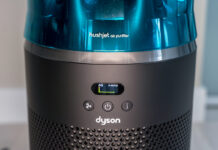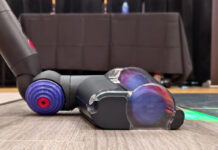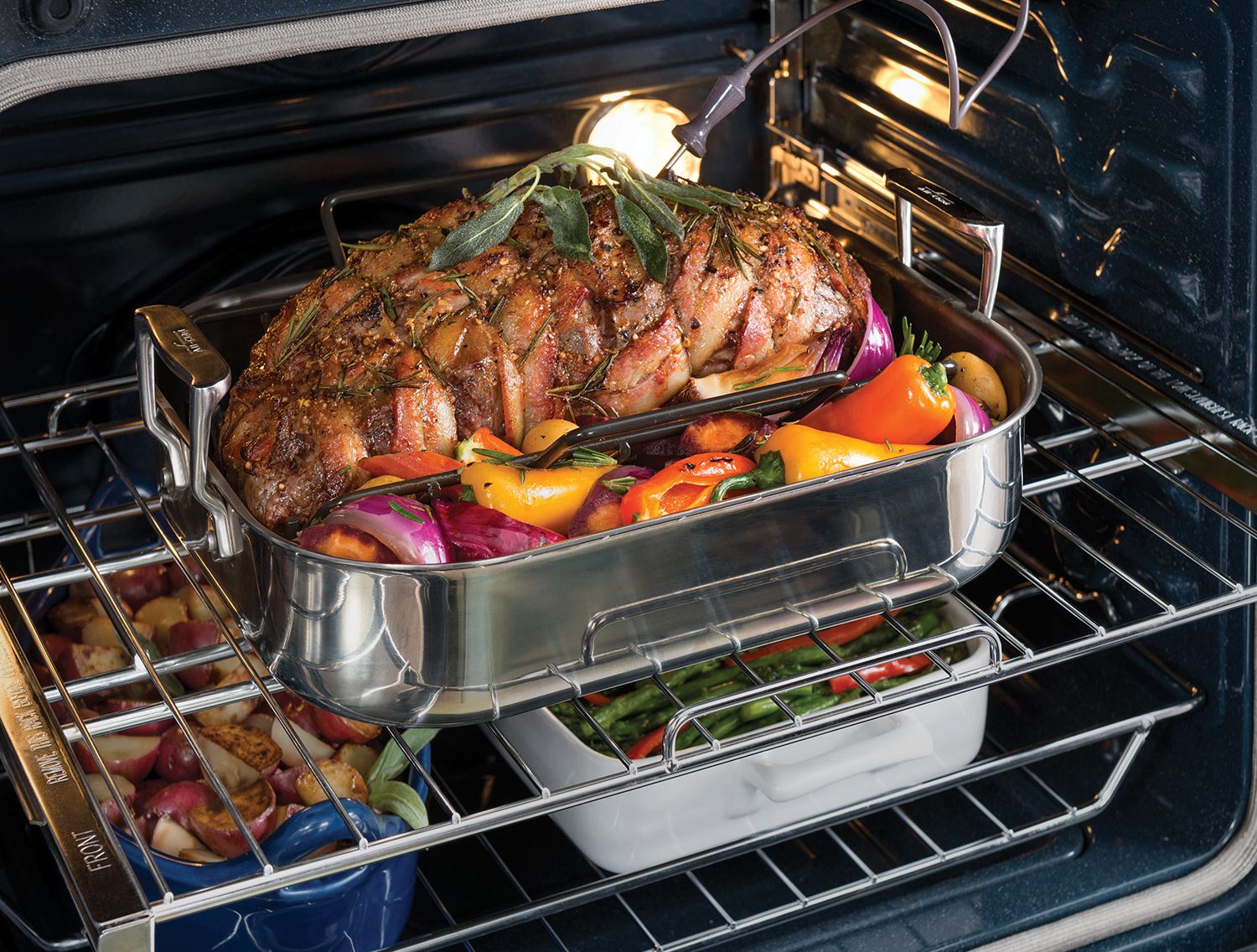 The other day, I realized that one side of my old Jenn-Air stovetop was no longer working. Time to buy a new oven, which means considering all of the options. One such option is a convection oven. But what is it, and will it work for your needs?
The other day, I realized that one side of my old Jenn-Air stovetop was no longer working. Time to buy a new oven, which means considering all of the options. One such option is a convection oven. But what is it, and will it work for your needs?
What is a convection oven?
A convection oven has a heating element with a fan in the back that blows hot air all around the food and circulates it throughout the interior, then vents it back out through an exhaust system. This helps to cook food more quickly and evenly. By contrast, a traditional oven has a single source of heat, which is usually found at the bottom of the oven.
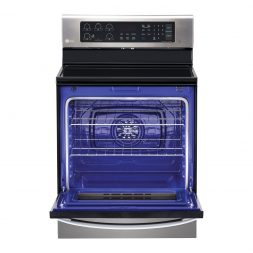 You may have heard of true convection ovens, also called European convection or third element convection. These add a third heating element along with the fan to blow more heated air through the interior, creating an even more uniform temperature, and thus cook, than you might find with a standard convection oven.
You may have heard of true convection ovens, also called European convection or third element convection. These add a third heating element along with the fan to blow more heated air through the interior, creating an even more uniform temperature, and thus cook, than you might find with a standard convection oven.
To fully understand how a convection oven works, consider a household fan. If you had the central air conditioning on in the home during a hot summer day, you’d feel nice and cool, right? But if you set up a fan and had it blow cold air directly onto your face, or circulate around the room as well, you would feel much colder, quicker. Think about when you step into an air-conditioned room and immediately plop yourself by the vent to get maximum coolness. Similarly, convection cooking circulates hot air all around your food, quickly, efficiently, and perfectly directed, so that it can cook fast, and more uniformly.
Usually, convection ovens look just like traditional ovens and ranges, and can function as such if and when you desire (more on that below). But they offer the option for convection cooking, and some even include special settings, like Convection Roast and ConvectionBake.
What are the benefits of a convection oven?
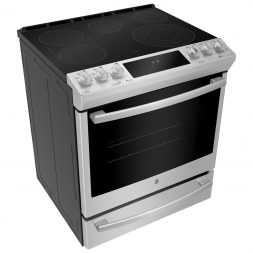
A convection oven cooks food more quickly
As noted above, a convection oven can cook food more quickly. This is great for time-saving, whether you need to get a meal on the table quickly, or cook multiple dishes. Most sources suggest that a convection oven can cook food about 25% faster than a traditional oven.
A convection oven cooks food more evenly
Beyond speed, convection ovens can also cook food more evenly, since the hot air is distributed around the food, touching on all corners to slowly cook at a consistent temperature, without any cold or hot air pockets. They are also better at browning foods: with a traditional oven, the air can get humid since moisture can’t escape, whereas a convection oven creates a dry atmosphere that can more quickly caramelize sugars, so the skin of your delicious ham or whole chicken will brown nicely, or vegetables will be nice and crispy on the outside while juicy on the inside.
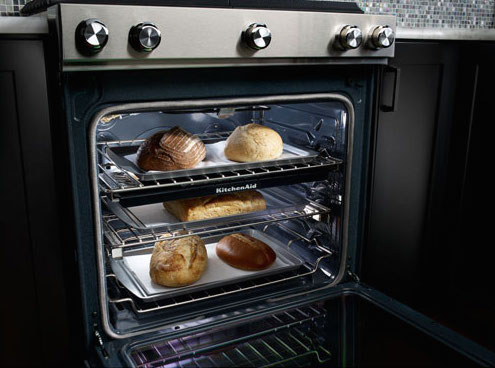
A convection oven can save energy
Another lesser-considered benefit of using a convection oven: it uses less energy. You are cooking for shorter periods of time, and often at lower temperatures, which also means it takes less time to preheat.
When should you use a convection oven?
While a convection oven can be for just about anyone, it isn’t applicable to every cooking or baking task.
You should, however, use a convection oven when you’re doing things like roasting meats or poultry, or cooking vegetables-virtually any time you’re cooking something where you’d want a crispy skin, and/or a caramelized exterior. It’s ideal for cooking foods like meat and fish, as well, to ensure it is thoroughly and properly cooked throughout.
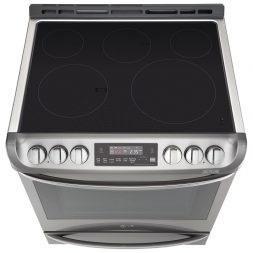
A convection oven is also great for anything cooked with a cover, like a casserole, because you don’t need to worry about losing moisture. If you’re toasting cheesy garlic bread, or dehydrating meat to make jerky, a convection oven can also come in handy. It’s also great for baking homemade chips and French fries.
A convection oven can also be useful for baked desserts, such as pies and some pastries, since it melts the fat and creates steam faster. You might see a better lift with pie doughs and pastries like croissants.
If you’re preparing for a neighbourhood or school bake sale, the convection oven can be your best friend for big batches of cookies. Bake multiple batches on different trays at the same time, and don’t worry about turning the trays around halfway to ensure an even bake, or avoid the back cookies burning. This is, of course, thanks to the evenly distributed heat that will give every cookie the perfect touch of heat so they all cook nicely and consistently.
When should you avoid using a convection oven?
While you might be jumping for joy at all of the wonderful things you can accomplish with a convection oven, consider that it shouldn’t be used for every cooking/baking project.
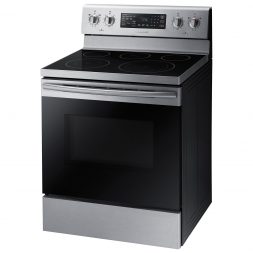 You should revert to a traditional oven setting when making delicate foods that start as batter, and need to set while cooking, like custards, flans, soufflés, cakes, quickbreads, and many others kinds of bread. The blowing air from the convection setting can lead to lopsided results, or you might find your cake has a strange texture if the outside is cooked while the inside is still a bit raw. With certain breads, using convection might result in a dark and crispy crust and dry middle.
You should revert to a traditional oven setting when making delicate foods that start as batter, and need to set while cooking, like custards, flans, soufflés, cakes, quickbreads, and many others kinds of bread. The blowing air from the convection setting can lead to lopsided results, or you might find your cake has a strange texture if the outside is cooked while the inside is still a bit raw. With certain breads, using convection might result in a dark and crispy crust and dry middle.
Tips when using a convection oven
Lower the temperature
Unless you are using a recipe that is specifically tailored to convection cooking, lower the temperature by about 25 degrees. Remember, a convection oven cooks things more evenly and quickly, so using the same temperature you might have been used to for your favourite recipes could result in overcooking or worse, burning, the food, without a temperature adjustment.
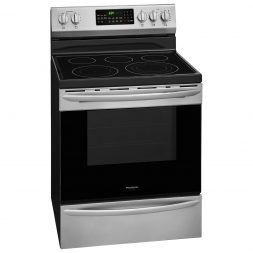
Check the food frequently
When converting favourite recipes, check the food frequently until you get the hang of convection cooking, and know how long each thing takes to cook. Try to avoid opening and closing the oven door too often, though, to avoid heat loss. Use the oven light where possible instead.
Use pans or trays with lower sides
Pans and baking trays with lower sides are better for convection ovens, allowing the hot air to more effectively circulate, and touch on your food. A rule of thumb is to leave about 2” of space on either side of the oven. Also, avoid covering the shelves with foil to allow the air to properly circulate.
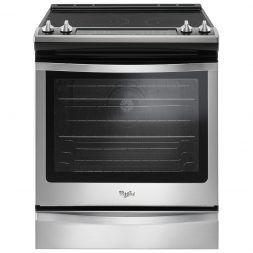 What to look for in a convection oven?
What to look for in a convection oven?
If you’ve decided to go convection, there are a few factors to consider before selecting the right one from the myriad of manufacturers that make them, including LG, Samsung, KitchenAid, Maytag, and Whirlpool, among others.
Design-wise, do you want electric or gas? Are you looking for a freestanding range, or will a slide-in fit best with your kitchen? Don’t forget the cooktop as well, since it will be used for boiling water, pan frying foods, making sauces, and more. Some options include smooth top, gas burners, coil tops, and induction.
Many convection ovens have different settings for one-touch cooking, like Convection Bake, which cooks at a lower fan speed for longer, which is great for dry recipes; and Convection Roast, with a higher fan speed that can result in delicious, crispy skins on your meat or vegetables.
Bottom line about convection ovens
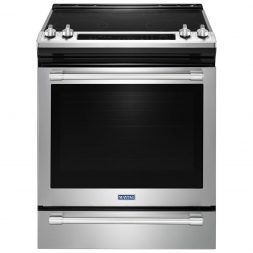
There’s so much you can cook and bake with a convection oven, and the fact that it can be accomplished faster and more evenly is a major plus.
Check out plenty of convection ovens, along with other ranges, cooking appliances, and ventilation gear, at Best Buy Online.

